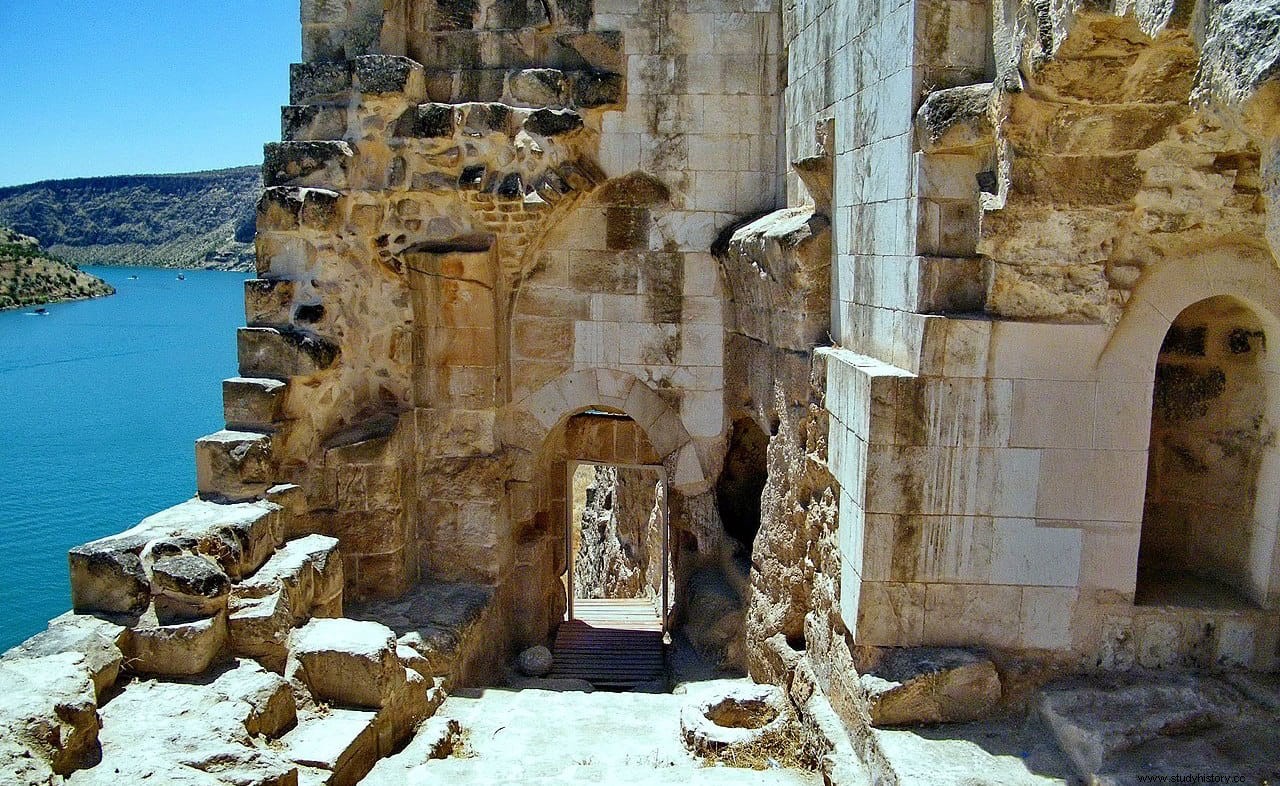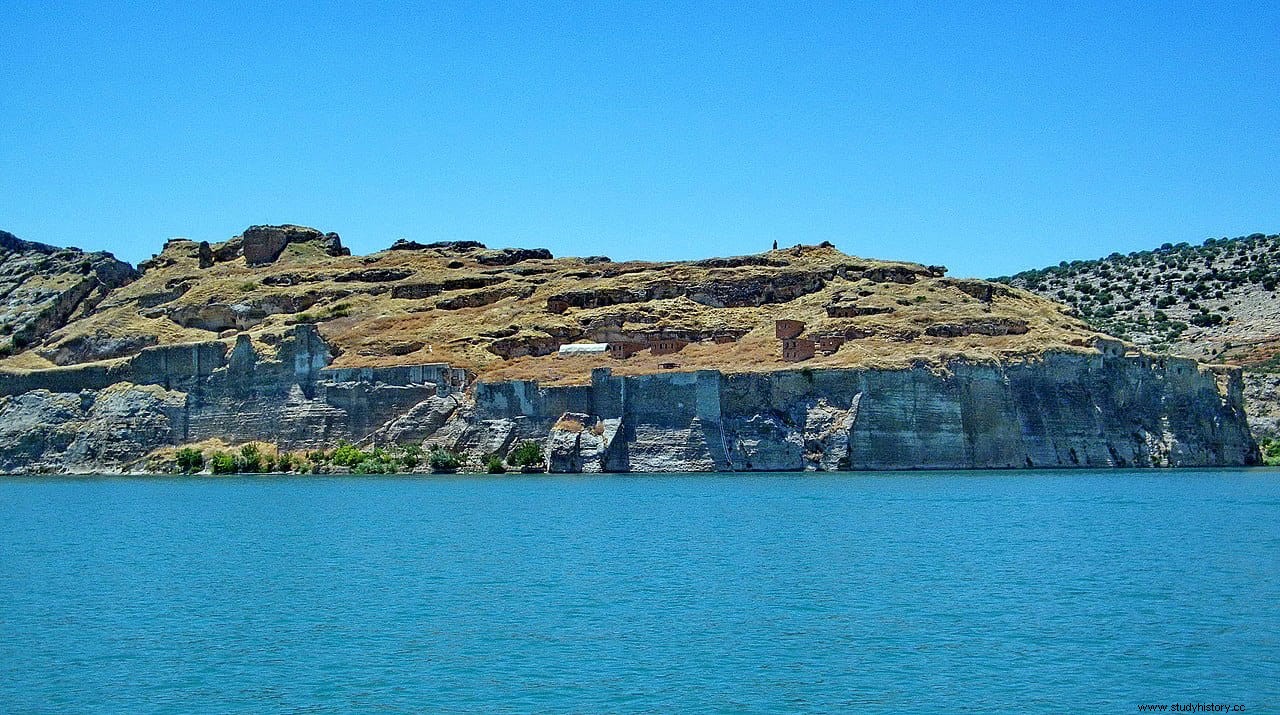On a high, spur-shaped, rocky plateau on the west bank of the Birecik Reservoir, about 4 km northwest of Eski Halfeti and 50 km northeast of Sanliufa in southern present-day Turkey, stand the ruins of a great fortress a banks of the Euphrates.
It is called Rumkale or Hromgla, which literally means Roman castle , this is from the Byzantines, and later known as Ranculat by the Crusaders. Although its origin is earlier, since the Assyrians already knew the strategic importance of the place and there are remains of previous settlements, most of the current structure is Hellenistic, Roman and Byzantine.
It is in the place where the Merziman River empties into the Euphrates, although a good part of the place was submerged after the construction of the Birecik dam on the Euphrates in the year 2000. But the walls that are still visible show how impressive it was to be the fortification. Due to its location, today it is only accessible by boat from the neighboring towns of Zeugma and Halfeti.

The foundation of the city of Rumkale is believed to date back to the Proto-Hittites in 1230 BC. Other sources state that the city was founded by the Assyrian king Shalmaneser in 855 BC. The truth is that the place passed through the domain of the Hittites, Assyrians, Medes, Persians, Macedonians, Seleucids and Parthians until the arrival of the Romans.
Tradition even claims that the apostle John lived here in a cave hewn out of the rock, where he dedicated himself to making copies of the Bible (it is still believed that somewhere in Rumkale there is one such bible buried and hidden). Q> 
During the first centuries of the Middle Ages the area changed hands several times between Muslims, Armenians, Mongols and Crusaders. The Armenian kings ended up buying the fortress from the Count of Edessa, expanding it and turning it into an almost impregnable place. The Catholicos or head of the Armenian church settled there until the conquest of the Mamluks in 1293, who called the place Qal’at al-Muslimin . In order to take over the fortress, they needed three days and used up to 33 catapults.
During the Armenian period the place became one of the main scriptorium medieval, in which some of the best manuscript illustrators of the entire Middle Ages worked, including the famous Roslin Bulls.
The Ottoman Empire took control of Rumkale in 1516 and turned it into an open prison where, among others, political opponents and anyone deemed a threat to Ottoman society, due to its remoteness, were sent into exile. and escape difficulty.

It was still functioning as such in 1737 when the English writer Richard Pococke visited it. However, a century later, around 1832, the place was definitively abandoned, beginning a process of ruin that Count Helmut von Moltke described as follows after his visit in 1838:

Another traveler, Carl Ritter, also reported in the 19th century that:
Most of the lower part of the fortress disappeared under the waters of the Birecik Reservoir in the year 2000. Among the buildings still visible there are some Armenian churches and monasteries, water cisterns, fountains and ditches. In the northern part there is also a palace from the Ottoman period and remains of houses. The oldest preserved structures date from the 12th century.
